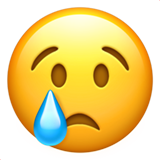Page 7 of 14
Re: Dynamic Planet B/C
Posted: November 10th, 2019, 3:34 pm
by Umaroth
IHateClouds wrote: ↑November 10th, 2019, 2:44 pm
any idea when more practice tests will be up?
Its kind of early in the season because not many invitationals have happened yet.

There's some old oceanography tests and one from SSSS tho!
I may eventually release my test from JOK Scrimmage, still not sure when
Re: Dynamic Planet B/C
Posted: November 11th, 2019, 6:53 am
by Adarsh29
Only one of the old tests is for Div B tho

Re: Dynamic Planet B/C
Posted: November 11th, 2019, 8:29 am
by Umaroth
Adarsh29 wrote: ↑November 11th, 2019, 6:53 am
Only one of the old tests is for Div B tho

Div b and c rules are the same with the exception of Rule 3.b.x.
Re: Dynamic Planet B/C
Posted: November 11th, 2019, 9:23 am
by adarsh
oh shoot I thought that 3.b.x and below was all only div C stuff. Thanks.
Re: Dynamic Planet B/C Notes
Posted: November 11th, 2019, 3:49 pm
by aeurius
Hey! So I was wondering if anyone has any links or just info on plate tectonics and ocean basins? I’m having a rough time finding superb info and i honestly am not sure what to put. - Anything would help! Thanks :,)
Re: Dynamic Planet B/C
Posted: November 13th, 2019, 9:53 am
by BennyTheJett
Plate tectonics are pretty simple. You probably know the 3 types of plate boundaries, and if you aren't familiar with tectonics, I'd put a diagram of the plates in your notes. As for ocean basins: giving us a binder probably means they'll ask about oddities, so I have diagrams of all the names of the ocean basins in each ocean. If you don't know, ocean basins are just large flat plains covering large spaces of the ocean floor, that tend to be deep (not as deep as trenches though). The sediment that covers the ocean floor (and makes the ocean floor flat) is usually lithogenous red clay (mud) or biogenous ooze of siliceous organisms (micro-organisms with shells composed of Si0
2), since calcareous ooze cannot deposit below the CCD (~4500m below the surface) and most basins are deeper than that..
Diagram of Ocean Basins (I cropped it to include just the pacific for size restrictions)

Helpful Links
https://www.youtube.com/watch?v=wP380-Iaoos
https://www.tulane.edu/~sanelson/eens21 ... basins.htm
https://en.wikipedia.org/wiki/Plate_tectonics(I Know it's wikipedia, but if you don't know about tectonics, it's a good place to start.)
If anyone sees an error in any explanations please correct me (I'm mostly spewing info from my head, and could have some stuff mixed up.).
Re: Dynamic Planet B/C
Posted: November 22nd, 2019, 10:18 am
by wmsscioly
On the rules it say x is division c only, is anyone sure if xi-xvi are also division c only or are for both?
Re: Dynamic Planet B/C
Posted: November 22nd, 2019, 3:38 pm
by LiteralRhinoceros
both
Re: Dynamic Planet B/C
Posted: November 22nd, 2019, 3:39 pm
by Umaroth
wmsscioly wrote: ↑November 22nd, 2019, 10:18 am
On the rules it say x is division c only, is anyone sure if xi-xvi are also division c only or are for both?
They are for both. The only exclusive section is 3.b.x.
Re: Dynamic Planet B/C
Posted: November 22nd, 2019, 7:21 pm
by aeurius
BennyTheJett wrote: ↑November 13th, 2019, 9:53 am
Plate tectonics are pretty simple. You probably know the 3 types of plate boundaries, and if you aren't familiar with tectonics, I'd put a diagram of the plates in your notes. As for ocean basins: giving us a binder probably means they'll ask about oddities, so I have diagrams of all the names of the ocean basins in each ocean. If you don't know, ocean basins are just large flat plains covering large spaces of the ocean floor, that tend to be deep (not as deep as trenches though). The sediment that covers the ocean floor (and makes the ocean floor flat) is usually lithogenous red clay (mud) or biogenous ooze of siliceous organisms (micro-organisms with shells composed of Si0
2), since calcareous ooze cannot deposit below the CCD (~4500m below the surface) and most basins are deeper than that..
Diagram of Ocean Basins (I cropped it to include just the pacific for size restrictions)

Helpful Links
https://www.youtube.com/watch?v=wP380-Iaoos
https://www.tulane.edu/~sanelson/eens21 ... basins.htm
https://en.wikipedia.org/wiki/Plate_tectonics(I Know it's wikipedia, but if you don't know about tectonics, it's a good place to start.)
If anyone sees an error in any explanations please correct me (I'm mostly spewing info from my head, and could have some stuff mixed up.).
Dude you're actually an angel omfg


